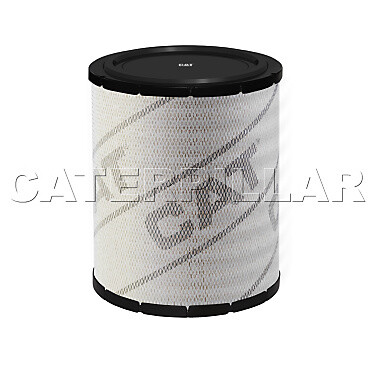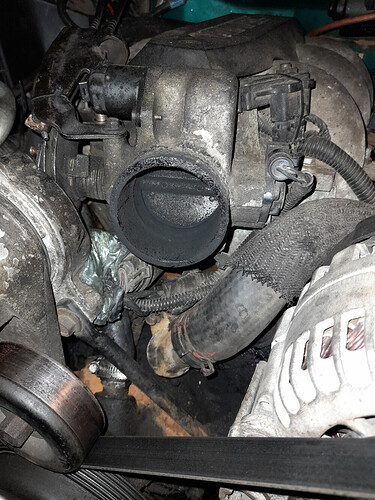Hi Joni.
What’s wrong with removing 90% of the soot?
Are there better ways?
I consider cyclone very important.I just don’t know the effect of gas temperature.
the cyclone does not catch soot! 
Soot is the molecular carbon of CO2 and is the finest fraction in the generator gas! 
What does it capture then?
the cyclone catches coal ash and coals. For coals, its work is within 99 percent and for ash about 75 …
Not so bad then, do you have anything better?
Yes.
For the very best input to output efficiency useage turn the carbons that make up soots to fuel gas before it leaves the grate.
Of course for many they want their system to make excessive charcoal . . . .
That ain’t me.
Woodstoving my ash is grey-white. Virtually no char. ALL used for space heating. My chimney, virtually no soots.
This is my gasifier goal now too.
S.U.
I have always thought and read that soot is a particle and that it has weight. It is a solid not a gas. So if it has weight a cyclone can spin this particles out of the gases with motion of centrifugal forces. You need a cyclone that will work at any velocity of spin put to it and it works better if it has a cone shape taper as the gases spin downward. A variable gate cyclone works well when removing small particles.
The white is ashes, the black is carbon dusts, and the soot you need magnification to see the particles. Unless you have a lot of it. Mix a little tar gases with it and you have glue for your engine parts, valves, pistons, bushings.
Hot filtering through a paper filter can catch these soot particles, also wet filtering, wood chips, hay. Ect…
Bob
That is a great goal Steve. That will put your efficient at the top, getting every bit of useable energy out of the carbon and H20.
You need lots of heat to do it.
Bob
AndreasT. cyclones most defiantly cool on a woodgas system.
You must decide how much to cool.
Keep the produced gasses, warm and “dry”. Maybe even insulating the cyclone.
Or, cool and condense; then making a wet cyclone.
When you see pictures of double ended cyclones assemblies these were mostly (but not all) intended to be wet gas washing system. With separate liquid pump and reservoir.
O.K. for never freezing climates. If you have the space, wiliness to deal with the sludge settlement. Black water you make is yours, and your responsibility.
A paper bag of soot can be solid waste deposed. Gardened with. Even burnt.
Regards
Steve Unruh
Jan here is how many now are separating out their hearth soots, char and ash. A dropper chamber. The round can between the righthand gasifer and the left hand hay filter barrel.
I am familiar, and have used horizontal flow rectangular dropper chambers on stationary systems. Used vertical form gas to liquid heat farmers that would drop out a lot of carbons too.
My point is many who were once cyclone users are not anymore.
S.U.
Ok, is there anyone who can show what it looks like after a dropbox?
Bob told me that the cyclone is a big limiter on the flow and I do not mind finding something better.
This is what it looks like in my intake manifold after about 2 months, (about 1000 miles)
(hmm it will be so much, 1800 km).
So I’m glad if you find something that works better, as you can see it’s not so clean, very messy.
What does your intake look like Joni?
I think you make a very good point JanA.
That the effectiveness of the cleaning system should be measured ONLY by it’s results at the engine.
And by this measure the different settlement systems work no better than yours, or anyone else’s cyclones.
The settlement chambers do rob less engine power though.
It takes engine power to suck-spin-flow cyclone’s.
Both cyclone and settlement chamber users can claim success by showing collected black materials. So, what, eh?
Neither can show clean engine intakes.
Three other systems have, and can:
The large surface area many elements hot box membrane filtering systems. The Government/University Swedish systems. Vesa Mikkonens many tubes of GoreTex, TeraTex fabric. As done by Dutch John and Patrick Johnson too. These all do work. But big heavy and bulky for the large all-under negative pressure housings system. And once the filtered out cake forms . . . one hot ember sucked in . . . and they burn up.
Ben Peterson tried this system too. Then changed over to “caldo rods”. Hollow permeable ceramic tubes. That worked too. Same cleaning procedure - back blowing clean. But . . . they were vibration and thermal shocking sensitive. The rods were expensive, and would eventually from shocking, crack or shatter.
Then you have Max Gasmans system of overcooling the gasses to wring out moistures washing out soots. Then re-heating the gasses. And keeping them warmed thorough an effective commercial pleated paper air filter. This filter in an insulated gas tight housing. The filter gasses then keep warned, up and through to the engine intake. Complex to build. And what do you do until all of it is up to operating stable temperatures? How to keep this system temperatures stability from my; this morning -2C, 40% r.h.; to todays expected high of 15C 90%r.h.??
Sorry Max. Color me skeptical.
Then Joni’s evolved system making only blue flare gas to his engine.
And he has two engine tear down videos showing clean intakes and clean piston tops and combustion chambers.
So this is the one I will be exploring now. How the hell does he do this?
What operating limitations does this impose?
Small hopper capacities?
Long warming up to all operating temperature stability?
My points JanA is it is the soot-up, and then intentionally burn out intake folks that are running up the actual usages and mileages. Yours included. Cyclone. Or, no cyclone.
You do first; what can be made to work.
Improvements that would than take away from that then proven baseline usages are not improvements.
Just added complexity.
Fancy cake frosting.
Clothing sparkle shiny made. Or tight ,restricted usage, tailored made.
I like simple sheet cake. And loose work clothing.
Steve unruh
Years back I was in the garage at work and watched them tossing out the filters for some scoop trams. I bet there is lots of useful filtering left in a huge diesel engine truck filter for a small woodgas engine to make use of for very little money. I bet if you pick a common one and ask real nice at the local service shops, explained why you needed them they would let you have them.

Speculations / results!
14.4.2021
The few “daring” builders who have welded a reheating mantel around their cyclones and fed mellow warm reheated gas trough large paperfilters have not been disapointed.
The cyclone gets hot during upstart and the reheating capability is ready when gases from the cyclone are let down to the condensing cooler and back up for reheating = drying before let to the paperfilter.
During gasifier start-up, all dirty gases are blown up into the sky, through the cyclone until useful gas is established. (By spark ignition, NOT flame.)
So, the paperfilter will never be “wetblown” by any start-up gases.
Max
Hi max Do you bypass the papper filter at start up till gasifier has warmed up,? With the fans pulling the circulation air.Thanks for sharing that excellent design.
Hi, Kevin!
As long as the gasifier is “fanned-up” it is natural and unavoidable to blow dirty gases straight up in the sky directly after the cyclone.
Who would think of blowing the dirt further into the system?
The cyclone gets hot with the dirty out-blow gases (into the sky), and can do the reheating with the mantle as soon as the outblow flame gets acceptable to the driver…
There is no “circulation air”, What so ever!
Max
Ok thanks max, my next unit i hope too get that hot paper filter off a reheat mantle, ASAP,HOPEFULLY, Hope all is well in you all,s neck of the woods, & souls, Lord bless.
Hi, Kevin!
15.4.2021
On behalf of the paperfilter: For controlling the set-up, you need 2 thermometers; you need to control the output temperature of the condensing cooler and the output temperature of the reheating mantel on the cyclone, (just where the dried gas enters the paperfilter). Just to get convinced that the cyclone mantel is performing proper drying of the 100% wet gas from the cooler…
After installation, and getting used to it, you will be able to control the relative temps just by hand, if you have a small hole in the insulations.
Be thorough to avoid ANY airleaks! Otherwise it can become a “fine” bonfire…
Max
Sounds right, my next project with wood gas adaptors, sooner than later hopefully, too many odd jobs too finish for a while .One day at a time i gess though.
